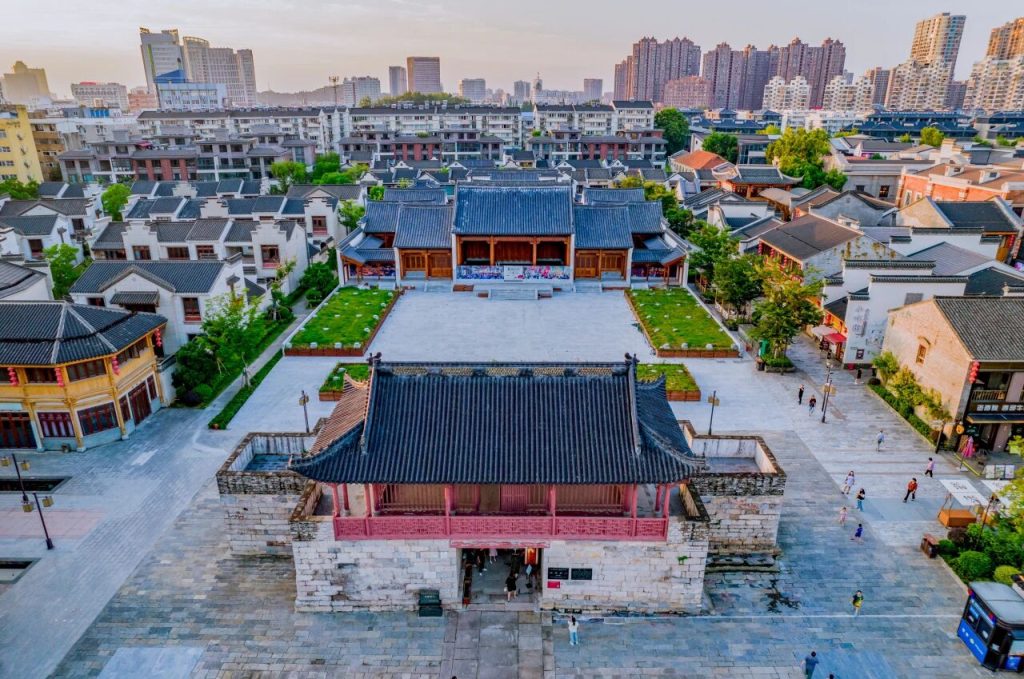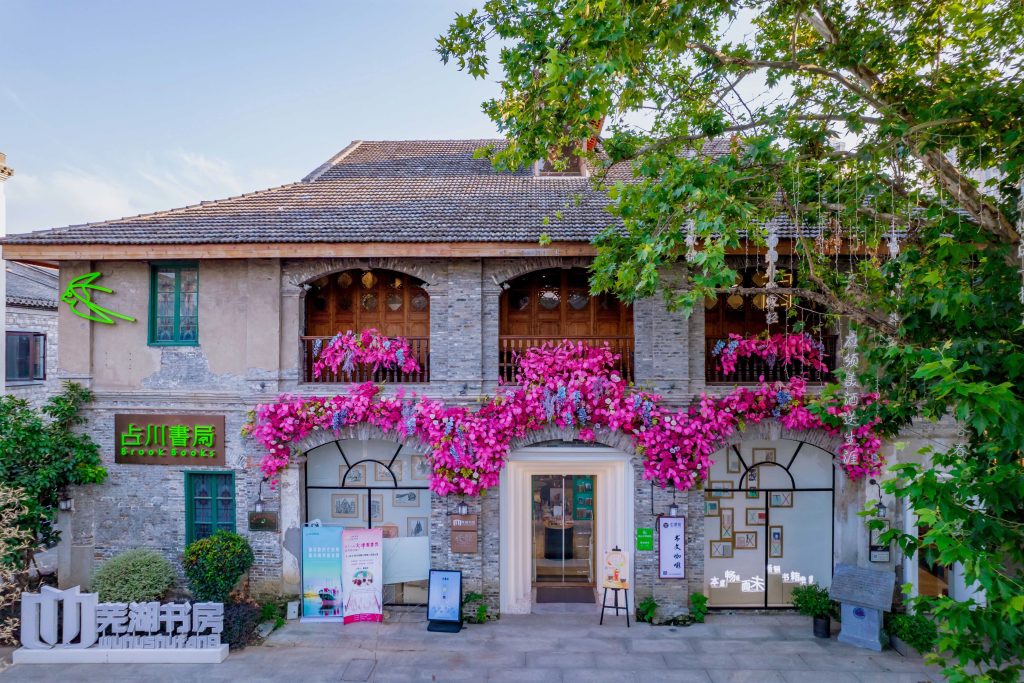Wuhu Ancient City: How Does It Grow?
“How Does Wuhu Ancient City Grow?”In recent years, “returning to small towns” has become an emerging travel choice. These destinations tend to be reasonably accessible, with convenient transportation and often hide unexpected delights—authentic local food, natural scenery, rich regional culture, and unique urban experiences. Among the “reverse tourism” destinations surrounding the Jiangsu, Zhejiang, and Shanghai regions, we turn our attention to a city worth exploring in-depth—Wuhu, Anhui. This “hidden gem” located along the Yangtze River attracts young people with its rich history, southern charm, and strong industrial foundation.Upon closer inspection, we find Wuhu offering a “cultivation-style” city tourism model, and behind this, a path of urban renewal. To make a city worth visiting, there must first be reasons for people to linger. Wuhu has a rich array of offline activities, with city walk routes that blend both Eastern and Western elements, ancient and modern influences. Located on the banks of the Yangtze, Wuhu has historically been an important commercial port city where southern and northern cultures intersected and converged. With its lively commerce, inclusive culture, and myriad skilled artisans, Wuhu has nurtured a vibrant city vibe with delicious food and rich cultural depth.Indeed.
Wuhu offers the relaxed charm of the Jiangnan region, coupled with the practical, hardworking spirit of local craftsmen, combining the “literary” qualities of the south and the “pragmatic” qualities of the north. As a former open port, Western culture has also left its mark here: from the old Customs House to the former British Consulate, you can follow a “Western-style” city walk route. Not far away, along the Qingyi River, there are well-preserved ancient streets and alleys. The contrast between the legacy of the open port and local streets gives Wuhu a unique urban flavor.In recent years, the trend of “small town tourism” and “population return” has led to an influx of young people into Wuhu, bringing both commercial aesthetics and a new wave of consumption. “The openness of the port,” “the charm of Jiangnan,” and “the craftsmanship of the city” have always been the essence of a walkable, engaging, and immersive urban experience—this is the fertile soil for new content. In the city center of Wuhu, there is a place known as the Wuhu Ancient City, which has become the “entrance to the city’s historical context.” Walking through the ancient city, we try to uncover some answers about the growth of small-town cultural tourism destinations.A Well-Preserved Ancient City Core.The Wuhu Ancient City is highly valuable, particularly in its ability to trace historical legacies. The preserved relics here span multiple dynasties, from the Song Dynasty to the Ming and Qing dynasties, right through to the Republican era.

This urban core retains its original administrative, judicial, religious, and educational functions, reflecting the characteristics of an ancient city. Not only does it serve as a memory carrier for Wuhu, but it is also a rare example of a well-preserved ancient city in the Yangtze River basin.Wuhu Ancient City remains a historical starting point for the city. With over 70 historical buildings, it functions like a miniature museum, spanning the Song, Ming, Qing, and Republican periods. The architectural styles blend Hui-style elegance with a unique fusion of Eastern and Western features. In terms of scale, preservation, and architectural fusion, the ancient city reflects the essence of Wuhu’s urban history. This means the project is not just about simple renovation but involves integrating the ancient city into the “city as a whole,” requiring the entire historical narrative to be rediscovered and re-presented.In addition to these buildings, the ancient streets and alleys, such as the Huajie and Nanmen Bay, with their hundreds of years of history, also carry the city’s memories. This transformation is not an easy task. The challenge is to preserve the memories contained within these old buildings and allow people to “read” the story of each house. At the same time, it’s crucial to extract the human spirit and Hui-style cultural elements to create a framework for the ancient city’s renewal.
Respecting history by following its trajectory ensures that the ancient city “comes back to life.”Reviving History and Creating Modern Connections.Wuhu’s ancient city is deeply rooted in the historical context, with the integration of old materials and contemporary design methods. The restoration process ensures that the streets and old names are preserved. More than 70 historical buildings, including the Yamen (government office), City God Temple, and Confucian Temple, have been restored in their original locations. Existing trees were numbered, supported, and kept in place. Local materials were used to the fullest extent. Wuhu’s local artists initiated a “Wuhu Brick Question” campaign, where old bricks were combined with new materials to restore architectural details. Facades, landscape walls, paving, and installations all utilize a blend of old and new materials. The preserved details express authenticity.From a pedestrian-scale city walk, the ancient city emphasizes a “spacious courtyard—narrow alley—small plaza” rhythm, transitioning from a leisurely walk through ancient streets to an experience rooted in cultural traditions and formal city governance. Each scene carries its own rhythm, from the government offices, City God Temple, and Confucian Temple, to the restoration of brick and tile structures, forming a solid “foundation” for future living content.

Once the linear texture, architectural details, and pedestrian scale are adjusted, history moves from a mere “background” to a “usable space.”Breathing Life into the Ancient City: A Connection to Modern Living.The “life” of the ancient city is not only about surface-level commerce but also about deep engagement with the younger generation. The key to revitalizing the ancient city lies in offering consistent content and creating a space that people can visit, stay in, and engage with. For example, on Hecheng Street, the former Qing Dynasty official building has been transformed into “Zhanchuan Bookstore,” where books, light meals, and local handicrafts coexist. It has become a cultural lighthouse in the city center, infusing the old building with a sense of humanity. The Yijiang Theater showcases the ancient city’s historical cultural memories, while around the corner is artist Ying Tianqi’s gallery, which preserves the visual record of the “10,000 People Collecting Bricks” event. Local memories are cherished and displayed.In the Jiangnan-style residential area, Duan Qianhou Hall, though weathered, has become a natural art exhibition space. The “Pioneering Youth Art Exhibition” has turned it into a hot spot for young people, with its raw and bold exhibition style. Old houses on Taiping Road and Mi Shi Street have been revitalized with coffee culture, Chinese-style tea houses, flower shops, and aesthetic spaces rooted in the alleyways.
These old homes now house fresh, youthful ideas and creative businesses, gradually becoming a new “base” for young people in Wuhu.A Sustainable Approach to Urban Renewal.The Wuhu Ancient City project is an exemplary model of sustainable urban renewal. Over the years, the behind-the-scenes team has been dedicated to urban revitalization and cultural tourism projects. From the land acquisition, planning, and renovation to the opening and operation, the entire project took nearly a decade. The goal is not just to restore historical buildings but to make the ancient city an integral part of modern life, blending history with contemporary needs.The driving logic behind the project is simple yet powerful: treat the ancient city as a “friend” and invest in it over time. This long-term commitment ensures that the ancient city remains more than a one-off commercial endeavor—it becomes a part of the city’s ongoing life. The developer, Hehe Commercial Investment, has been working in the urban renewal and cultural tourism field for over 20 years, focusing on deep, long-term collaboration with cities. Their core strategy is not about “quick wins” but about cultivating the city’s “brand” slowly, creating spaces that resonate with both residents and visitors.For more cities gaining recognition through “reverse tourism,” Wuhu Ancient City offers a roadmap that can be replicated but should never be “copied and pasted.” The key is to protect the foundation, activate the local life, and let time do the rest.